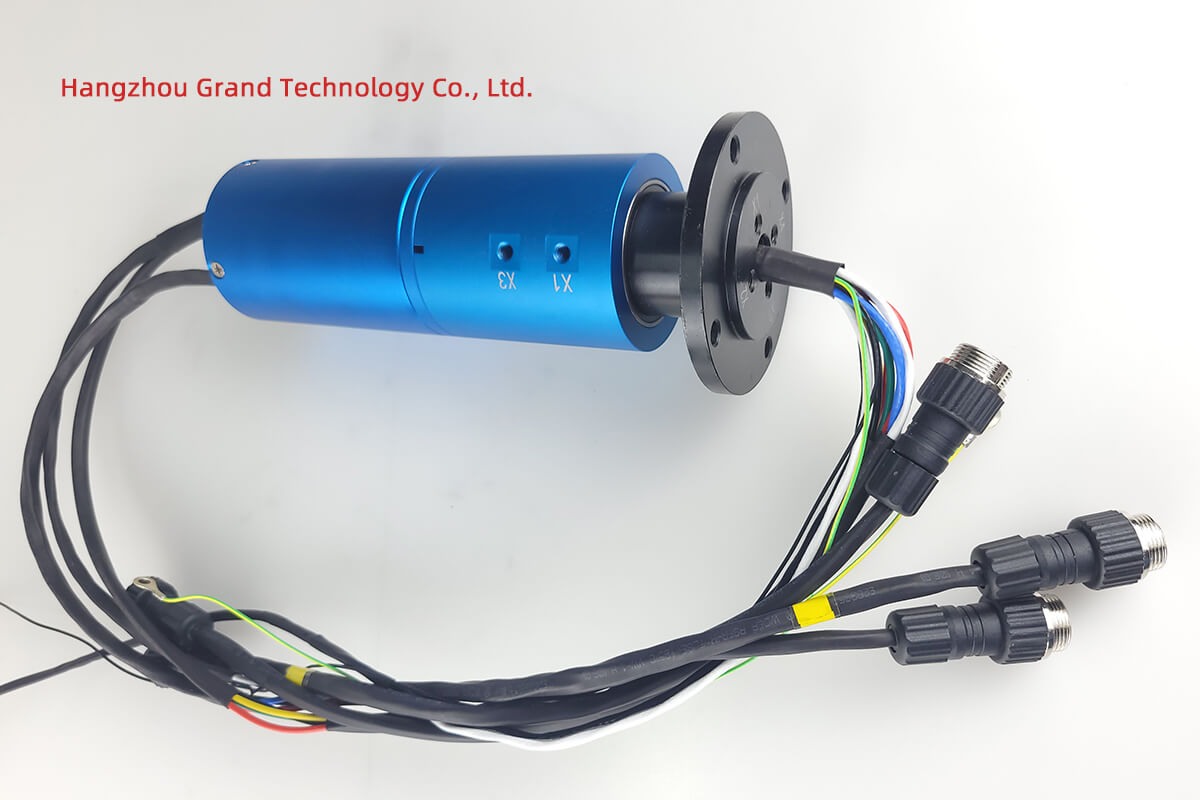Slip ring motors are remarkable pieces of engineering, holding a pivotal role in numerous specialized industries. These motors possess unique features that set them apart from conventional motors, making them suitable for applications where high starting torque and precise speed control are crucial. In this essay, we will delve into the inner workings of slip ring motors, exploring their advantages, applications, challenges, and maintenance. Additionally, we will compare slip ring motors with alternative motor types and discuss potential future developments in this field.
What is a Slip Ring Motor
A slip ring motor, also known as a wound rotor motor, is a type of induction motor with a distinctive rotor design. Unlike the squirrel-cage induction motor, which has a simple and robust rotor structure, the rotor of a slip ring motor consists of insulated windings. These windings are connected to external components called slip rings through brushes. The purpose of these slip rings is to provide electrical contact to the rotor windings, enabling them to access an external resistance during motor start-up. This characteristic differentiates slip ring motors from conventional motors, as it grants them enhanced control over starting conditions.
The development of slip ring motors dates back to the early 20th century when engineers sought to overcome the limitations of squirrel-cage induction motors. By introducing slip rings and resistors to the rotor circuit, they were able to achieve smoother motor starts and adjust the starting torque as needed. Over time, slip ring motors found their niche in industrial applications that demanded high starting torque and speed control.
Internal Mechanism
The inner workings of a slip ring motor revolve around its rotor design and the role of slip rings and brushes. The rotor’s insulated windings are placed around a laminated core, creating a more complex structure than the solid bars found in squirrel-cage rotors. The brushes, usually made of carbon or graphite, maintain contact with the slip rings to enable electrical connections between the stationary and rotating parts of the motor.
During motor start-up, the slip rings and brushes facilitate the introduction of an external resistance in the rotor circuit. This resistance, often achieved using a liquid resistance starter or a solid-state device, limits the amount of current flowing through the rotor windings. Consequently, the motor experiences a gradual increase in voltage, allowing for a smooth start with reduced mechanical stress and current peaks.
The concept of rotor resistance plays a crucial role in the performance of slip ring motors. By adjusting the external resistance, engineers can control the motor’s starting current and torque characteristics. Additionally, slip ring motors offer the advantage of providing variable speed control, allowing for precise adjustments in speed based on the application’s requirements.
Advantages and Applications
Slip ring motors offer several advantages over other motor types, making them well-suited for specific industrial applications. One of their key advantages is their ability to handle high starting torque. In scenarios where equipment requires a heavy initial push, slip ring motors outperform squirrel-cage induction motors. This advantage makes them popular choices for applications like large cranes, hoists, and mining machinery.
Another significant advantage of slip ring motors is their capability for speed control. By adjusting the external resistance, engineers can vary the motor’s speed within a wide range. This versatility is invaluable in industries such as steel production, where precise control over the rolling process is crucial.
Slip ring motors find applications in diverse industries, including mining, steel production, marine, and cement manufacturing. In mining, these motors power heavy-duty equipment, such as conveyors and crushers. In the steel industry, they drive rolling mills and furnaces. In marine applications, slip ring motors are utilized for propelling ships, winches, and pumps.
Challenges and Maintenance
While slip ring motors offer significant advantages, they also present certain challenges. One of the main concerns is the maintenance of the slip rings and brushes. The brushes can wear over time, leading to increased resistance and reduced contact with the slip rings. Proper maintenance, including regular inspections and replacements, is necessary to ensure optimal performance.
The external resistance elements, such as liquid resistance starters, also require attention. Proper calibration and monitoring are essential to avoid electrical imbalances and potential damage to the motor.
Comparing Slip Ring Motors with Alternatives
When comparing slip ring motors with other motor types, several factors come into play. Squirrel-cage induction motors are simpler in construction and require less maintenance than slip ring motors. They are often preferred for applications where high starting torque and speed control are not critical factors.
On the other hand, variable frequency drives (VFDs) offer speed control capabilities similar to slip ring motors but without the need for slip rings and brushes. VFDs are more efficient and have a smaller footprint, making them suitable for applications where space and energy efficiency are crucial.
However, slip ring motors excel in situations that demand high starting torque and precise speed control. Their ability to handle heavy loads and provide adjustable starting characteristics makes them indispensable in certain specialized industries.
Future Prospects and Innovations
In the ever-evolving world of engineering, slip ring motors continue to receive attention for potential improvements. One area of interest lies in developing more reliable and efficient brush materials to reduce maintenance requirements. Additionally, advancements in electronic control systems may offer more sophisticated methods for managing slip ring motor performance and energy efficiency.
Slip ring motors are specialized induction motors with unique features that set them apart from conventional motors. Their ability to handle high starting torque and provide variable speed control makes them valuable assets in specific industrial applications. While they come with maintenance challenges, their advantages and versatility make them indispensable in mining, steel production, marine, and other specialized industries. As technology progresses, slip ring motors may see further innovations, solidifying their continued relevance and growth in the engineering landscape. As we move forward, these remarkable machines will undoubtedly play a vital role in powering the industrial machinery that drives our modern world.


